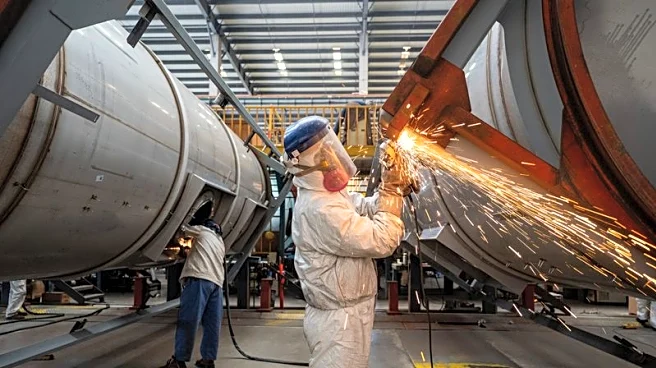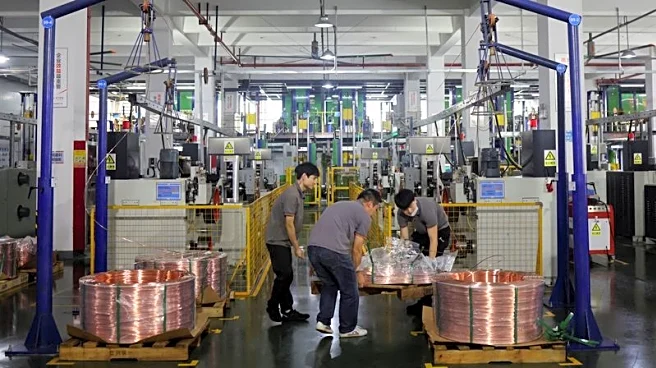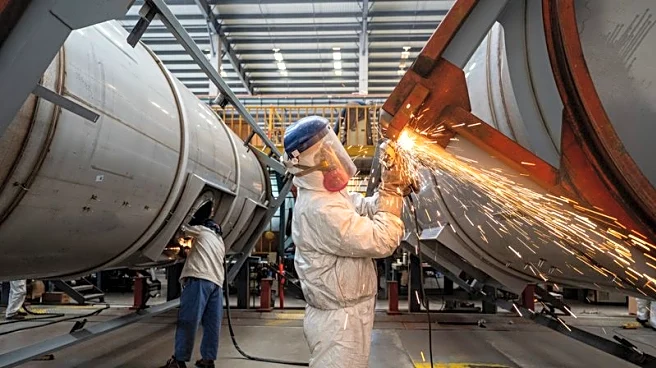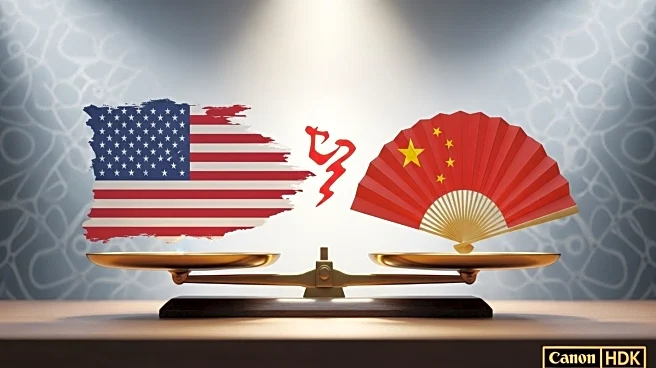What's Happening?
China's official Manufacturing Purchasing Managers' Index (PMI) reported a smaller-than-expected contraction in September, with a reading of 49.8, slightly above the forecast of 49.6. This marks the strongest performance since March, despite remaining below the 50-benchmark that separates growth from contraction. The improvement comes as China intensifies efforts to curb industrial overcapacity amid sluggish domestic demand and global trade disruptions, including higher U.S. tariffs impacting exports. A private survey by RatingDog showed a PMI of 51.2, surpassing expectations and marking the highest level since May.
Why It's Important?
The data indicates a potential stabilization in China's manufacturing sector, which is crucial for global supply chains and economic health. The smaller contraction suggests that China's measures to address industrial challenges may be yielding results, providing some relief to global markets concerned about trade disruptions. For U.S. businesses reliant on Chinese manufacturing, this development could mean more stable supply chains and potentially lower costs. However, ongoing tariffs and trade tensions remain a significant factor affecting bilateral trade and economic relations between the U.S. and China.
What's Next?
China's continued efforts to manage industrial capacity and stimulate domestic demand will be critical in determining future PMI readings. The U.S. tariffs and their impact on Chinese exports will remain a key issue, influencing trade negotiations and economic strategies. Businesses and policymakers will need to monitor these developments closely, as they could affect global economic stability and trade dynamics. The private sector's positive PMI reading suggests potential resilience, but sustained improvement will depend on broader economic conditions and policy decisions.












